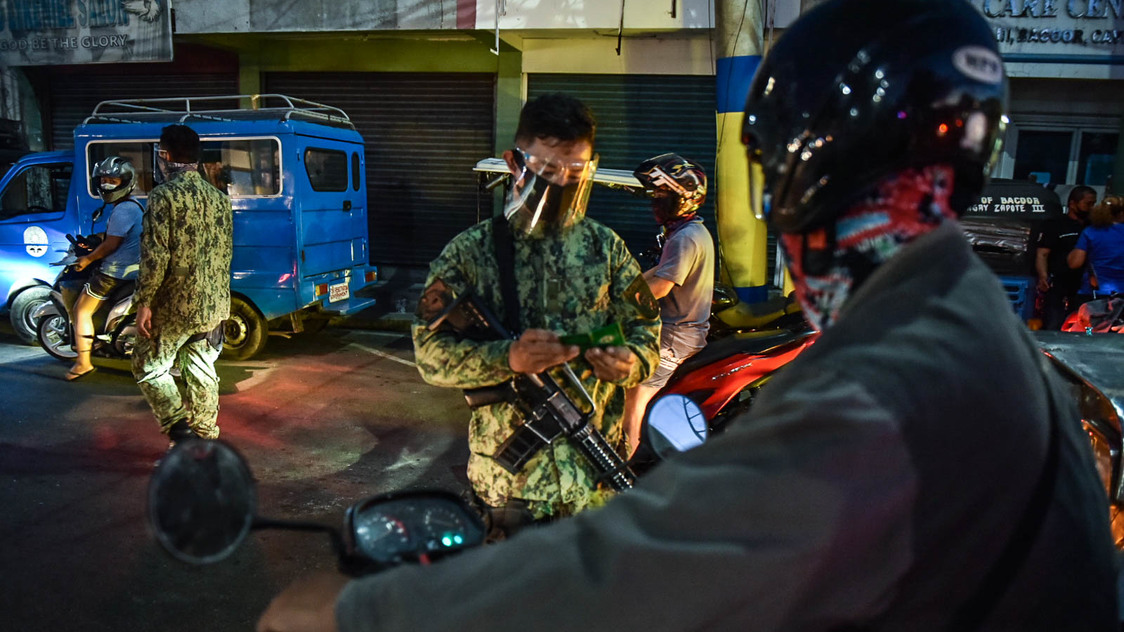The island nation of Philippines has officially added over 100,000 new COVID-19 cases in a span of 10 days, alarming health officials and social movements. On Monday, April 5, with over 8,355 cases in the past 24 hours, the total number of cases crossed 803,398. The new surge of cases prompted the government to extend its community quarantine for the capital territory, Metro Manila, and its adjoining regions until April 11.
The new series of extended lockdowns, or enhanced community quarantine (ECQ), covers the capital region and the provinces of Bulacan, Cavite, Laguna and Rizal, now called the National Capital Region Bubble (NCR Bubble). It began on March 29, as the cases started rising dramatically during the Holy Week celebrations.
On March 26, the number of total recorded infections crossed 700,000, after a single day increase of around 9,800 cases, the highest in months. This led to over 25 million people, or a quarter of the nation, being put back under the lockdown.
Despite the extension of the lockdown, on April 2, 3 and 4, the health department recorded 15,310, 12,576 and 11,028 cases respectively. These figures put the outbreak in the Philippines in the top four in Asia, behind India, Turkey and Iran.
Last year, at the onset of the first wave of COVID-19 infections, the Philippines imposed one of the most stringent and the longest lockdowns in the world. Despite the heavy policing that goes with the lockdown and stringent guidelines, the government has consistently attracted criticism for being able to neither contain the number of cases nor transition away from lockdowns and community quarantines to more sustainable containment measures.
The inadvertent impact of the lockdowns has been a decline in the national GDP by 9.5% in 2020 and continued contraction predicted for 2021. The lockdowns were also heavily criticized for mass arrests, improper and inadequate distribution of cash and food aid, and at times even death due to police violence on quarantine violators. According to Rappler, hundreds were arrested in 2020 for violating quarantines, which overwhelmed the courts and led to a change in policy earlier this month.
Public health advocacy groups and health workers have reiterated their stand for the government to replace the “militaristic” quarantine methods with more humane models. In a statement released by the Solidarity of Health Advocates and Personnel for a Unified Plan to Defeat COVID-19 (SHAPE UP) last week, public health advocates called for the government to reconstitute the counter-pandemic body, Inter-Agency Task Force on Emerging Infectious Diseases (IATF).
The IATF largely consists of officials from the military and the police, and no public health professionals occupying the top posts. SHAPE UP has also pointed out the DOH’s pandemic plan is a “failed response” and has demanded to hold the Rodrigo Duterte government responsible for it. It also reiterated the call for the resignation of health secretary Francisco Duque III.
Demands were also made by the Coalition for People’s Right to Health to account for people’s basic necessities for the vulnerable and the working classes. “Given the preexisting inequality in economics and health access being further worsened by the pandemic, such policies will always adversely disadvantage the poor even more; only the privileged can live and seek medical attention despite the checkpoints and fiscal crisis,” the group said in its statement.
Economists have also raised similar concerns, noting that there will be more quarantine violations if better and more efficient distribution of aid does not come along with the lockdowns.
On the other hand, while the government continues to show confidence in the strength of the healthcare system to handle the new surge in cases and even promised to increase the number of hospital beds, frontline health workers have raised concerns of being understaffed and overworked.
“The nurse to patient ratio in COVID-19 wards should be 1:3 for moderate to severe COVID patients and 1:1 for critical care. But in reality, one nurse handles an average of 12 severe cases and in the intensive care unit, one nurse takes care of two to three patients,” said Jaymmee de Guzman, the national treasurer of Filipino Nurses Union (FNU).
Based on reports from Rappler.





